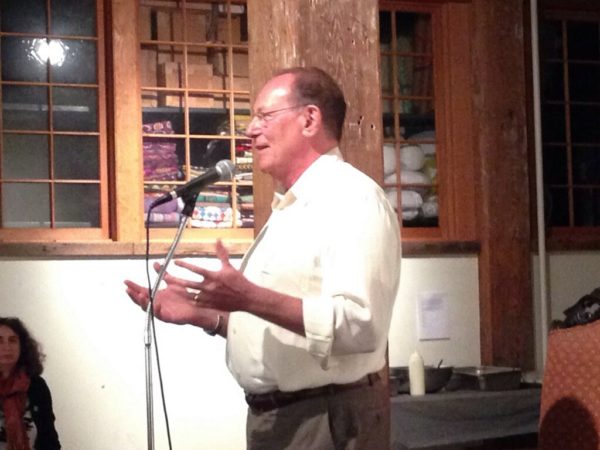What I’ve Learned from Listening to My Audience
I’ve been speaking to many diverse groups lately about the writing of my recent novel, On the Sickle’s Edge. As I refined my talk, a most wonderful speech coach—let’s call her Nancy—offered me some advice. It turned out to be brilliant.
“You’re a natural storyteller,” Nancy said. “But to connect with your readers the way you want to, you have to be able to answer a particular question. Why would anyone want to give up an hour of their time to drive to an auditorium or a hall somewhere, perhaps in the rain, to listen to you? If that person asked you what she was going to get out of your talk, what would you say? And what’s the call to action? What do you want to inspire your listeners to do when they go home after your presentation?”
Hard questions. I responded with indignation, which I was smart enough not to verbalize. But why, I wondered, should I have to justify my speaking? Isn’t it enough that I’ve written a book people love? That puts them in touch with their emotions, that makes them laugh and weep? That I’ve created characters whose lives they care about? If they loved the book — or would love the book if they read it — isn’t that enough?
Apparently not. To ensnare an audience, to bring them into my world, I have to do more than the traditional, “Tell them what you’re going to tell them. Then do the telling. Then tell them what you’ve told them.” First, it turns out, I have to tell them what’s in it for them. Let them know upfront what gifts I have to offer.
It had never occurred to me that, in speaking, I would be able to give gifts to members of my audience, and I struggled to articulate what I thought I was giving.
But the process put me in the minds of my listeners — and suddenly, I discovered an unexpected parallel. I write in the first person, which allows me to see through the eyes of my characters, to speak in their voices, to feel their emotions. By asking why my listeners might want to come and hear me, I was putting myself in their shoes, looking at myself through their eyes and hearing my voice through their ears. It turned out that living through my characters had prepared me perfectly for listening to my audience.
And as I listened, something remarkable took place. I forgot that I was speaking to a crowd of strangers. My unease disappeared. The anxiety I felt before every speaking engagement dissolved.
It was difficult to identify and put into words what I thought my listeners might get out of my presentation. But by going through that process, I developed a different relationship with them. I was no longer a speaker talking to them about my process, my story, my book. Instead, I became someone who, in sharing with them something about my own story, was interested in connecting them to their own histories, and to reigniting whatever connection they might feel to their own past.
At speaking engagements, people who’ve read On the Sickle’s Edge still approach me to share how much they loved the story, how it put them in touch with their own past, their own family history.
But there is a new twist. Now, many in my audiences, whether they’ve read the book or not, tell me that my talk has inspired them to learn more about their own family history. I’ve given them a sense of how important it is to share family stories with the generations on our heels.
I believe deeply that as we travel further in time from the decisions our ancestors made — decisions that caused them hardship and sacrifice, yet made our lives possible — the less connection we have to the sense of purpose that might give us meaning when we experience difficult times in our own lives.
That’s a story worth telling, and one that everyone should hear.

